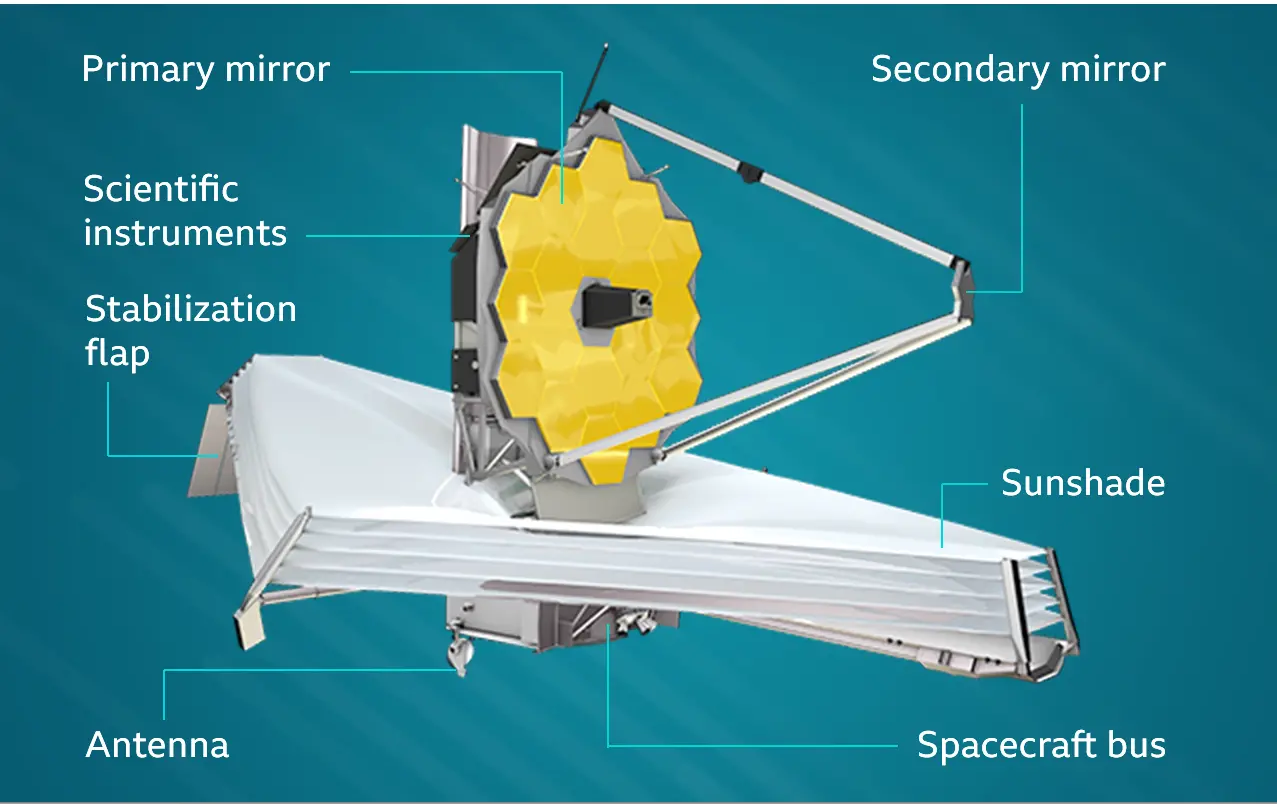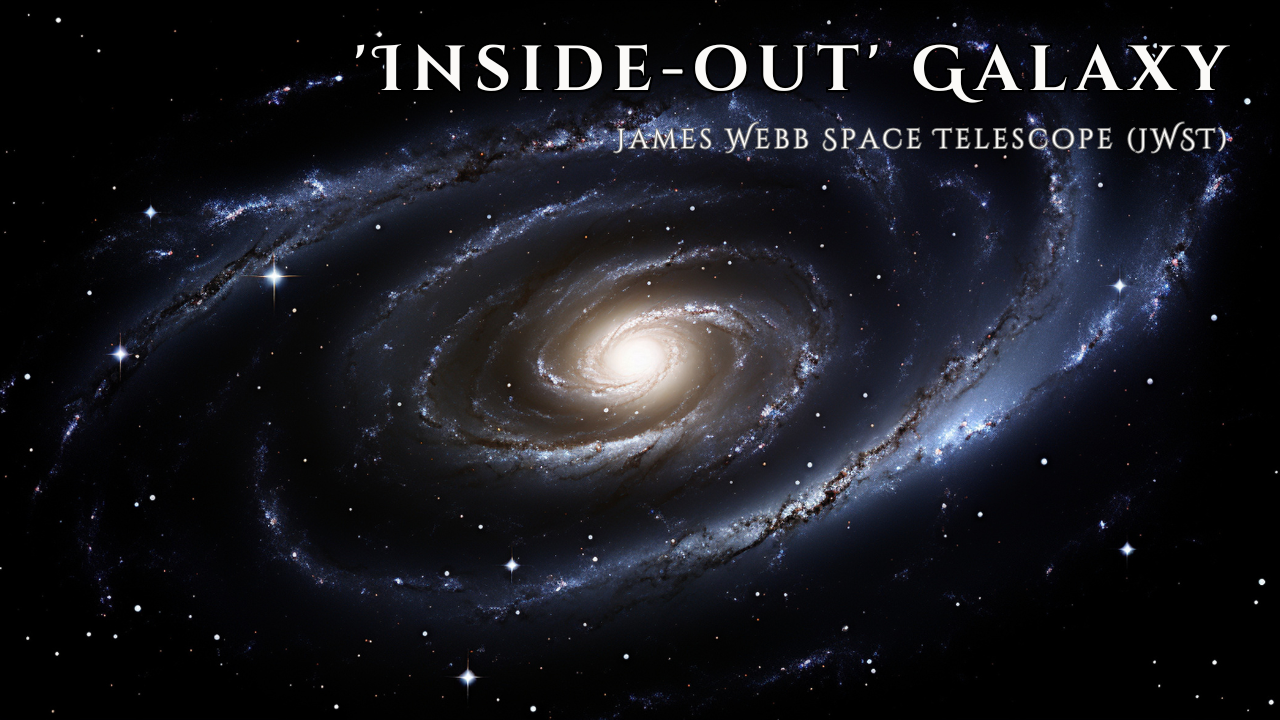Font size:
Print
Inside-out Galaxy
Context:
Astronomers using the James Webb Space Telescope (JWST) have made a groundbreaking observation of a galaxy’s Inside-out Galaxy growth just 700 million years after the Big Bang.
 More on News about ‘Inside-out’
More on News about ‘Inside-out’
The researchers, led by the University of Cambridge, emphasise that the images captured by the JWST provide a vital snapshot for understanding the evolution of galaxies from primordial gas clouds to the complex structures we observe today.
JWST’s Launch and Capabilities
|
Key Highlights:
- Galaxy Size and Maturity: This galaxy is about 100 times smaller than the Milky Way, yet it appears surprisingly mature for such an early stage in the universe’s history.
- Growth Pattern: This galaxy resembles a large city, featuring a dense collection of stars at its core that becomes less dense in its outer regions.
- Notably, star formation is accelerating in these outer regions, indicating the galaxy is starting to sprawl.
- Significance of Discovery: This observation marks the earliest detection of inside-out galactic growth, a phenomenon that had not been studied at such an early point in the universe’s history until the advent of JWST.
Observations of NGC 1549:
- The galaxy, identified as NGC 1549, is part of the JADES (JWST Advanced Extragalactic Survey) collaboration.
- Despite its relatively young age, its core density resembles that of present-day massive elliptical galaxies, which contain 1,000 times more stars.
- Interestingly, most star formation is occurring in the outskirts rather than the core, with a notable star-forming “clump” even further out.
- The study revealed that this galaxy doubles its stellar mass in the outskirts approximately every 10 million years—an exceptionally rapid rate compared to the Milky Way, which takes about 10 billion years to double its mass.
Mechanisms of Growth:
- Galaxies today primarily grow through two mechanisms: accreting gas to form new stars or merging with smaller galaxies.
- The specific processes that drove growth in the early universe remain an open question.
- Researchers compared the growth of galaxies to a spinning figure skater, where as the galaxy accumulates gas, it gains momentum and evolves into its spiral or disk shape.
Implications:
- The researchers emphasise the need to investigate other galaxies from the same era to understand whether they exhibit similar growth patterns.
- Analysing various galaxies across cosmic time will help reconstruct the overall growth cycle of galaxies.
Subscribe to our Youtube Channel for more Valuable Content – TheStudyias
Download the App to Subscribe to our Courses – Thestudyias
The Source’s Authority and Ownership of the Article is Claimed By THE STUDY IAS BY MANIKANT SINGH





